#CIRCA 3RD CENTURY A.D.
Explore tagged Tumblr posts
Text
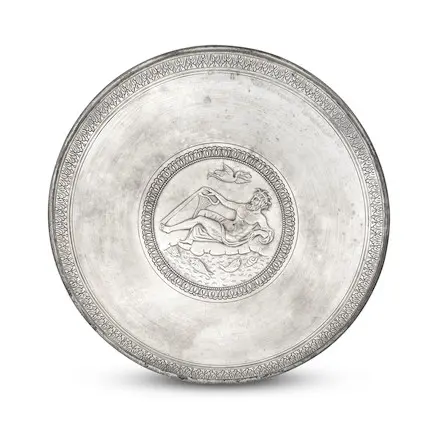
A large Roman silver plate decorated with a River God Circa 3rd Century A.D.
#A large Roman silver plate decorated with a River God#Circa 3rd Century A.D.#silver#silver plate#ancient artifacts#archeology#archeolgst#history#history news#ancient history#ancient culture#ancient civilizations#ancient rome#roman history#roman empire#roman art#ancient art
27 notes
·
View notes
Text
Phos Hilaron one of the oldest Christian hymns surviving (circa 3rd-4th century A.D.) my beloved
166 notes
·
View notes
Text

A Roman life-size bronze ear Circa 1st-3rd Century A.D. 8.5cm high
Bonhams
46 notes
·
View notes
Photo
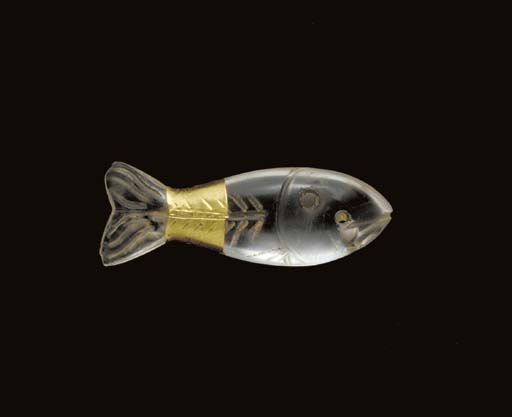
A ROMAN ROCK CRYSTAL AND GOLD FISH PENDANT Circa 1st-3rd Century A.D.
271 notes
·
View notes
Text
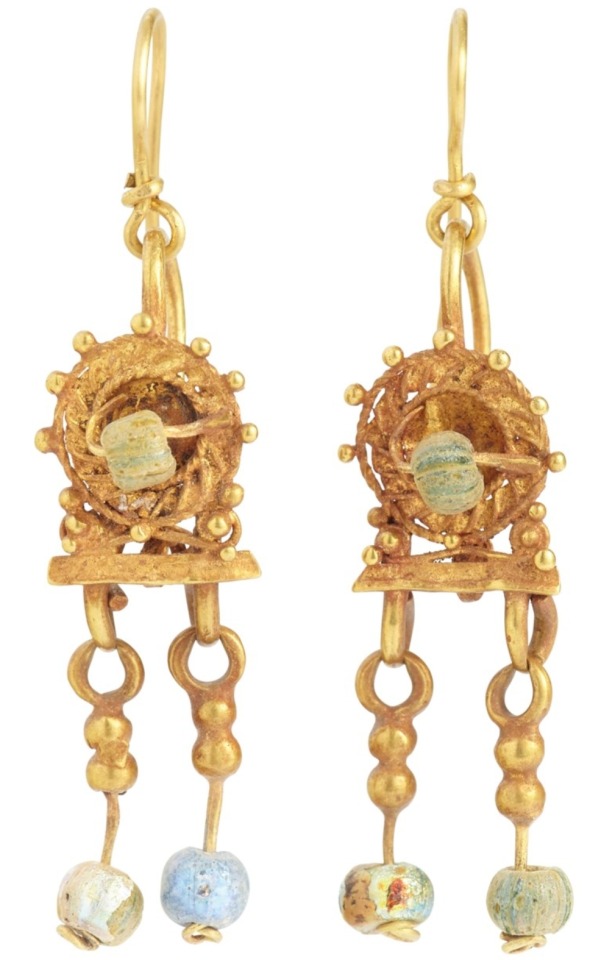
A pair of Roman gold and glass earrings, circa 2nd-3rd century A.D. x
#antique jewelry#gold artifacts#roman artifacts#archeology#antique art#roman art#gold jewelry#glasswork#Mediterranean#uploads#artifacts#antique
14 notes
·
View notes
Text
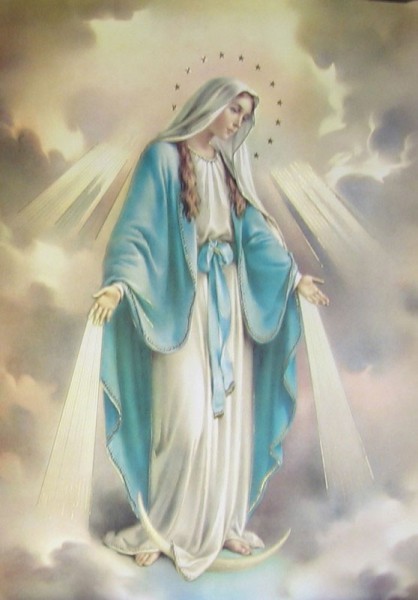
SAINTS FOR FEBRUARY 09
ST. APOLLONIA, VIRGIN AND MARTYR OF ALEXANDRIA, EGYPT-Highly regarded for her courage and integrity, she was captured in 249, when she was already an elderly woman, during the fierce persecutions of the 3rd century in Egypt. Refusing to deny the faith, she was tortured by having her teeth torn out, and was finally burnt alive.
St. Eingan, 6th century. Welsh prince and hermit, also called Anianus, Einon, and Eneon. He came from Cumberland, in Wales, the son of a chieftain. Eingan had a hermitage built at Llanengan, near Bangor.
St. Teilo, 6th century. Welsh bishop, also called Eliud, Issell, Teillo, Teilou, Dub, and Theliau. A native of Penally, Pembrokshire, Wales, he studied under Sts. Dyfrig and Dubricius. He accompanied the famed St. David of Wales to Jerusalem and was a friend and assistant to St. Samson in Brittany, France, for seven years. Returning to Wales in 554, he was quite successful as a preacher and founded and served as abbot-bishop of Llandaff monastery in Dyfed, Wales. He was buried in Llandaff Cathedral.
St. Alto, 760 A.D. Hermit and missionary, recorded as an Irishmen or possibly an Anglo-Saxon. He lived near Augsburg, Germany, arriving in the region circa 743. Living in a simple hut in wild lands, Alto soon achieved a reputation for holiness and austerity. Word of his good works reached King Pepin, who gave him a parcel of land near Altmunster, in modern Friesling Diocese in Bavaria. Alto Alto soon achieved a reputation for holiness and austerity. Word of his good works reached King Pepin, who gave him a parcel of land near Altmunster, in modern Friesling Diocese in Bavaria. Alto cleared the land and founded an abbey. St. Boniface came in 750 to dedicate the abbey church. The monastery was ravaged by the Huns but was restored in 1000 and made a Benedictine house. The Brigittines took it over in the fifteenth century.
St. Cronan the Wise, 8th century. A bishop of Ireland, possibly identified with St. Roman He systematized canon law in Ireland.
St. Cuaran, 700 A.D. An Irish bishop also called Curvinus or Cronan. He became a hermit on Iona, Scotland, after retiring as bishop, hoping to conceal his identity. St. Columba, however, recognized Cuaran.
Bl. Anne Catherine Emmerick, Roman Catholic Augustinian Canoness Regular of Windesheim. Her convent was suppressed by Napoleon, who controlled the region. Soon afterward, she fell ill, and spent her remaining years bedridden. In this state of suffering, she received numerous visions, private revelations, and the mystical gift of the stigmata. Feb. 9
1 note
·
View note
Photo
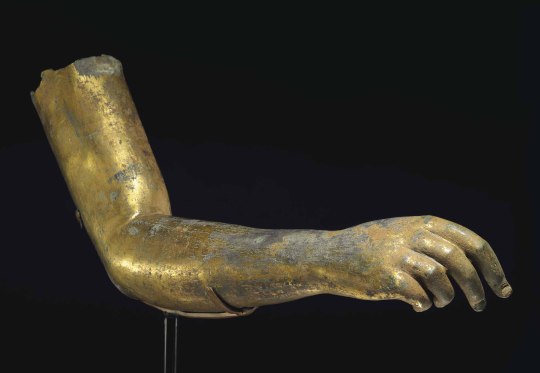
“A ROMAN GILT BRONZE RIGHT ARM” circa 1ST–3RD CENTURY A.D.
Over-lifesized, bent at the elbow, the bicep articulated, the fingers gracefully extended, the nails and knuckles naturalistically rendered, with traces of lead preserved in the hand once-securing the now-missing attribute, preserving gilding throughout. [L: 23 5/8″]
245 notes
·
View notes
Text

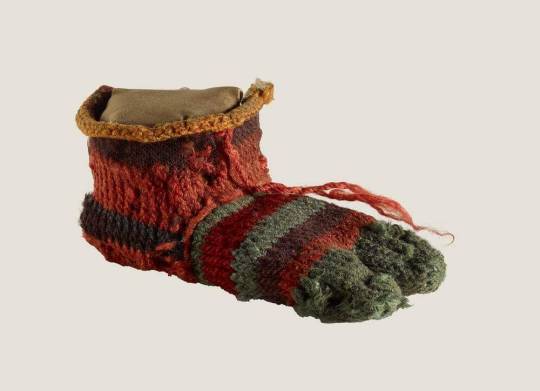
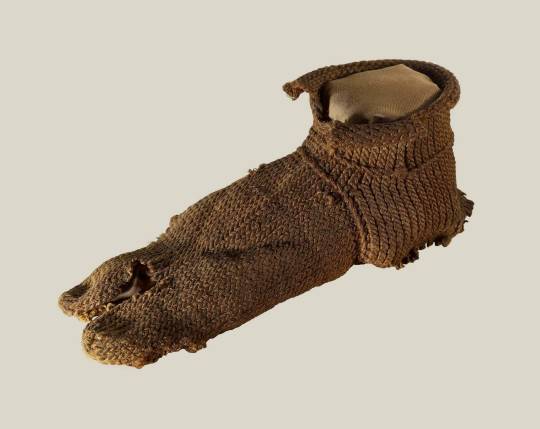
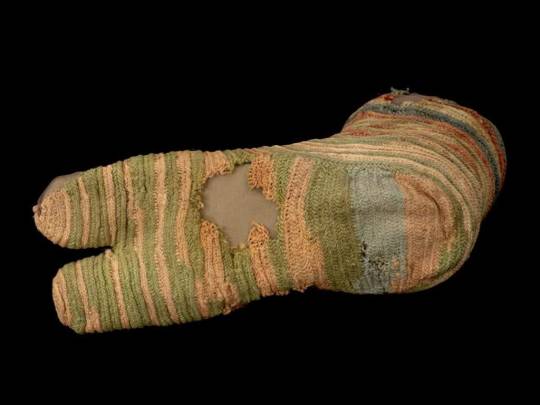
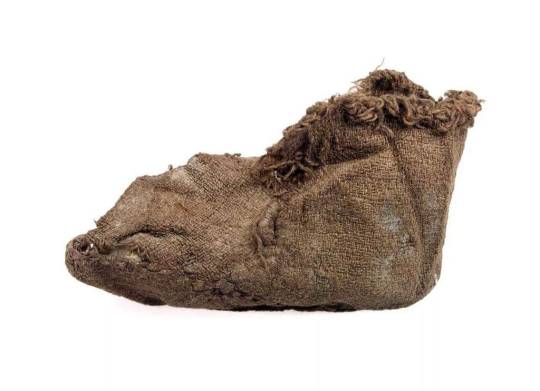
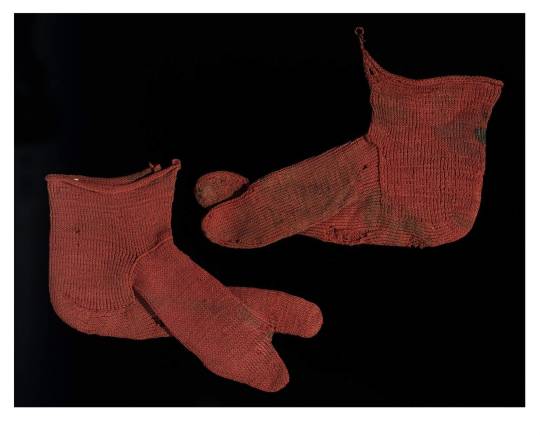
D'Artagnan.
"Ancient Egyptian and Roman socks and some interesting conservation techniques .
Stone Age cave paintings and archeology indicate that animal pelts or skins were wrapped and tied around feet as a "sock"
In the 8th century BC the Greek poet Hesiod in his poem, “Works and Days”, mentions ‘piloi’, a type of sock made from matted animal hair worn under sandal. Later the Romans wrapped their feet in strips of leather or woven fabric. By circa 2nd century AD they began to sew pieces of fabric together to make a kind of fitted sock called ‘udones’ that resembles a modern sock
The first pair of woollen socks to be discovered were found in Vindolanda on Hadrian’s Wall in Northumbria from 2nd century AD. They are child-sized made from woven wool cloth meant to protect against the cold British climate. A Roman tablet found at the site included the instruction to “send more socks”.
The earliest pair of “knitted “ socks were found in Ancient Egypt at Oxyrhynchus on the Nile in Egypt. ca 3rd -5th century AD using the naalbinding, featuring split toes and designed to be worn with sandals.
By the 5th century AD, holy people of Europe would wear socks called ‘puttees’ which symbolized purity.
#1 Red Egyptian wool socks ca 4th to 5th century AD and were excavated in Egypt at the end of the 19th century.
They have a divided toe and are designed to be worn with sandals .They were made using the nålbindning technique ; which is commonly confused with knitting. The technique sometimes called knotless netting or single needle knitting is a technique closer to sewing than knitting. These socks were made using three-ply wool.
Some believe that this technique was a forerunner of the faster method of knitting with two or more needles.
The Romano-Egyptian socks were excavated in the burial grounds of ancient Oxyrhynchus, a Greek colony on the Nile in central Egypt at the end of the 19th century. Donated the Museum in 1900 by Robert Taylor Esq., 'Kytes', Watford.
Both nålbindning and knitting produce a texture composed of elastic rows of stitches made out of a single thread. Its elasticity facilitates a close-fit for hands, feet and head. Fit is of particular importance in a cold climate but also for protecting feet clothed in sandals only. Nålbindning is much more time-consuming than knitting and requires great nimbleness of the left-hand fingers - an extension of a basic basketry or netting technique, which in its simplest form is a single loop worked through a single loop, and is akin to sewing. This technique is linked with home production for personal use, but is highly skilled. The disadvantage with nålbindning is that only a limited length of yarn (a needleful) can be worked, another length has to be joined - in knitting a thread of indefinite length is used.Height: 25.5cm
Length: 18cm Measurement when laid flat © V&A
© V& A
#2 British Museum Left foot child’s striped wool sock from the 3rd or 4th century AD (carbon dated ) British Museum in London. It was found in a landfill during the 1913-1914 excavation of the Egyptian city of Antinooupolis led by English papyrologist John de Monins Johnson on behalf the Egypt Exploration Fund.
More recently a group of British museum scientists lead by Joanne Dyer decided to analyse the dyes in the sock, along with several other textiles dating from ca 250 - 800 A.D in order to better understand ancient Egyptian clothing, manufacture economy and trade practices during the late Egyptian period of Antiquity that ended with the Muslim conquest of the region in 641 A.D
The scientists used the non invasive technique of Multispectral imaging, which scans the surface of objects to test for pigments.It can detect degraded minute colour traces not visible to the naked eye under different wavelengths of light
Analysis has revealed that the sock contained seven hues of wool yarn woven together in a striped pattern.Three natural, plant-based dyes were used madder roots for red; woad leaves for blue and weld flowers for yellow.
The colours were mixed to create different hues and shades of green, purple and orange.Different colour fibres were spun together and in some cases individual yarns went through multiple dye baths.
Sock for the left foot of a child with separation between the big toe and four other toes worked in 6 or 7 colours of wool yarn (several S-spun strands, Z-plied) in a single needle looping technique sometimes called naalebinding and worked from the toe upwards. Each toe is made separately from dark green wool (10 rows). The two toes are then joined and worked in bands of the following colours: salmon pink (4 rows), purple (4 rows), bluish-green (4 rows), dark red (6 rows), green (2 rows). The sole of the heel is then worked. The heel section is worked in bands of salmon pink (3 rows), purple (3 rows), dark blue (2 rows), salmon pink (8 rows), purple (4 rows), yellow (4 rows). A welt across the instep marks where the loops are worked in the round. The top edge is continuous and curls over; a loose thread of red wool forms part of a tie or tassel at the centre front.© Trustees British Museum
#3 Adult wool sock right foot with a separation between the toes. radiocarbon dated to 100-350 CE. Also found at Antinooupolis. There is an impression of the sandal thong that is still visible ©Trustees British Museum
#4 Coloured wool sock Topside after restoration dates 4th – 5th century AD © National Musuems Scotland (Not Shown).
The Museum register records that the sock was probably found in Akhmim (Ipu in ancient Egypt), making it at least 1,500 years old. It was most likely to have been excavated from a burial site, and was acquired by the Museum in 1911 from the Egyptian collection of Frederick George Hilton Price (1842 – 1909), a banker and collector.
A very interesting blog by Miriam Mcleod from the National Museums of Scotland about restoring and conserving this ancient Egyptian sock
https://blog.nms.ac.uk/2020/05/07/the-lost-sock/
#5 Egyptian sock underside after conservation as #4 © National Museums of Scotland
#6 Child’s woollen sock, 2nd -3rd century found at Vindolanda © Vindolandia Trust Hadrian's Wall Northumberland
#7 as #1 ©V&A
Note on British Museim socks
In 1913-1914, English papyrologist John de Monins Johnson excavated the Egyptian city of Antinooupolis on behalf of the Egyptian Exploration Society. Antinooupolis (Ἀντινόου πόλις) was founded as a Greek polis by emperor Hadrian in 130 CE in honour of his friend Antinoos, who is said to have drowned nearby in the Nile.
In addition to finding papyri, the excavations yielded other objects such as coins, textiles, hairpins, and metal tools considered to be “lesser” finds. Amongst these "lesser" finds were two socks made of woolThe socks are now being studied as part of a collaborative project called Antinoupolis at the British Museum, which is being led by Elisabeth R. O'Connell, Assistant Keeper (Curator) in the Department of Ancient Egypt and Sudan with responsibility for Roman and Late Antique collections. This project will make available unpublished objects from Johnson's 1913-1914 excavations, as well as Johnson's unpublished excavation documentation
Love D'Artagnan xxx".
64 notes
·
View notes
Photo

A ROMAN LIMESTONE RELIEF CIRCA 3RD CENTURY A.D.
#birth of venus#hermanubis#Occult#occultus#abraxas#abracadabra#ka-anubis#anubis#canopic mystical doctrine#egyptian mysticism#rome#ancient egypt#ancient greece#symbols#gnosticism#gnostic gems#gnostics#gnostic#middle pillar#middle path#mesocosm#Venus#african venus#early christianity
480 notes
·
View notes
Photo
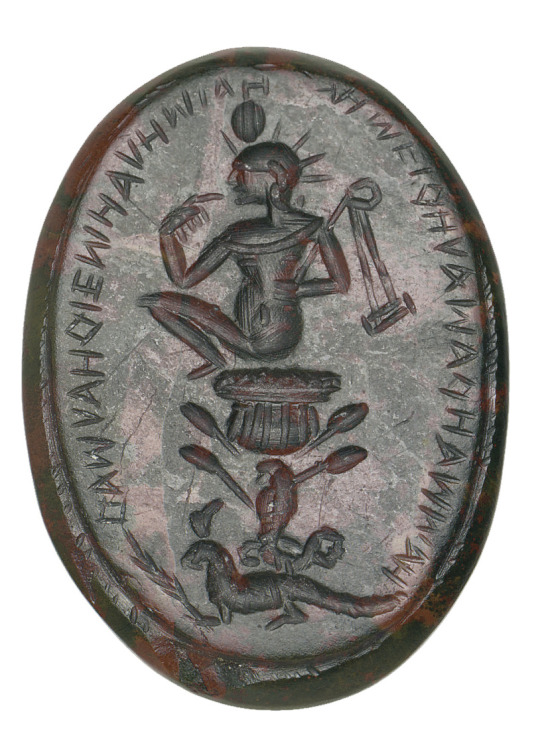
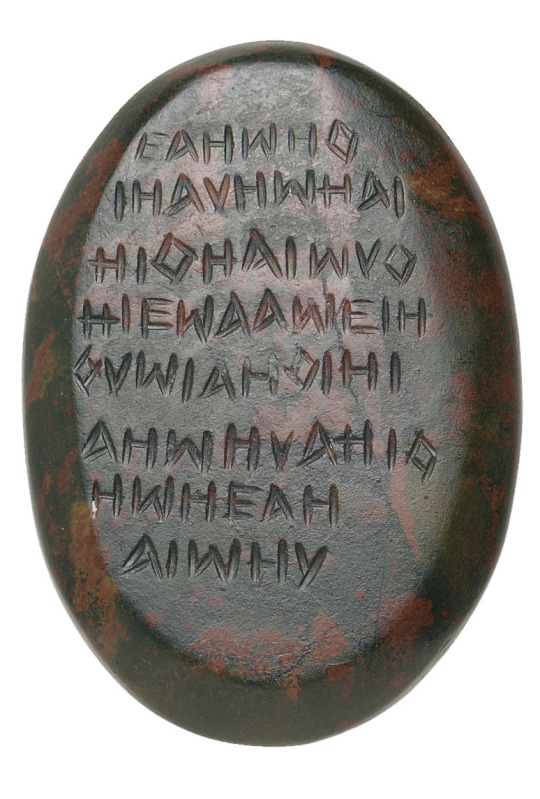
A ROMAN BLOODSTONE "MAGIC GEM"CIRCA 2ND-3RD CENTURY A.D.
1 5/16 in. (3.3 cm.) long
https://www.christies.com/lot/lot-a-roman-bloodstone-magic-gem-circa-2nd-3rd-5158132/
72 notes
·
View notes
Text
The Rose Cross of Azazel
“According to an esoteric reading of the Tarot, a Red Rose represents Venus (Azazel’s human wife), while a Red Cross represents the angel Azazel. The combined Rose-Cross in one respect represents the sexual union of Azazel and his human wife.
The word ‘Rosicrucian’ is German for ‘Rose Cross,’ a term synonymous with Red Cross. In addition to this, the word ‘rose’ is an anagram for Eros, the name of the Greek god of Love, who was the first-born son of the angel Azazel and of his human wife.
The 18th Degree in Freemasonry is commonly known as the Rose-Croix (Rose Cross), a fact showing the relation to and establishing a link between these two seemingly diverse organizations. In fact, the ascension of Freemasonry (not to be confused with the more archaic Masonry) as we know it today correspondingly relates to the decline of the Rosicrucian order in Europe, most markedly in Germany, the birthplace of Rosicrucianism (Dr Sigismund Bacstrom, an important Rosicrucian scholar of the alchemical sciences, wrote in Bacstrom’s Rosicrucian Society (circa late 18th to early 19th Centuries A.D.) of “the August most ancient and most learned (Rosicrucian) Society, the Investigators of Divine, Spiritual and Natural Truth (which Society, more than two centuries and a half ago (during the 15th Century), did separate themselves from the Freemasons...).” These movements being inter-related and dynamic by their their very natures, Freemasonry later re-absorbed many Rosicrucians back within its ranks (See pp.55-56 Proofs of a Conspiracy: Chapter I by John Robinson, 1798 A.D.). There are many Rosicrucian Societies yet in existence today, most notably AMORC. In addition, and of a most interesting note, the Order of Maat Supreme Grand Lodge owns a web site called Links Central of Maat (M.A.A.T. = Master of the Temple A.’A.’ [A.’A.’ = Aleister Crowley’s Argenteum Astrum/Silver Star]. See p. 241 Nightside of Eden by Kenneth Grant, 1977 A.D.), by their own profession “a web ring for Rosicrucians,” which employs a rose-cross ankh symbol (a rosetau). This is derived from the name of the Egyptian god Seker, who represented the angel Azazel, who was called ‘He of the rosetau,’ which is to say, he of the rose (red) cross. In Scene 2 of the 3rd Tableau of the Initiation of Plato, it is revealed that Azazel’s symbol, “the red cross,” was “traced upon the banner of Egypt,” on what amounted to being the national flag of Egypt. And according to Flying Roll No. 10 (in Roman numerals, 10 = X, named in honor of Azazel) of the Hermetic Order of the Golden Dawn, ‘X’ (a cross variant) is the occult sign of Osiris risen (Osiris represented Azazel’s cherub Behemoth. It is for this reason A. E. Waite, a member of the Hermetic Order of the Golden Dawn, lists the Wheel of Fortune, representative of Azazel’s cherub, as the 10th [Roman numeral X] Major Arcana of the Tarot. There exist those who hold the crossed- arm symbolism represents ‘Osiris slain’). It must also be noted The Church of Scientology employs a similar logo, called the Cross Saltire.** Compare the Cross Saltire to Aleister Crowley’s OTO Rose Cross Lamen (a lamen is a magical charm-like pendent worn around the neck by the leader of a witch’s coven). This signifies Azazel’s (represented by the ‘X’) future appearance as the false Christ (represented by the cross). When the symbol for Azazel (x) is superimposed upon the cross (+), it forms what is known as an eight- point compass rose. For this reason a classical wooden ship’s wheel, which resembles an eight point compass rose, is at times used as a symbol of Azazel (as are wheels of similar composition). A ship’s anchor (often found wound round with a chain) is also used as a symbol for the union of Azazel and his human wife, as it represents the union of the tau cross, representative of Azazel, with the crescent moon, the crescent moon being a symbol of Azazel’s human wife). (**Author’s Note: The Process Church of the Final Judgment founded by two ex-Scientologists employed a decidedly related symbol depicting a serpent upon a cross [in the place of Christ crucified], what one might venture to identify as being a Chritianized- version of the palladium (the palladium is related to the alchemical device known as the ‘Crucified Serpent.’ Most of the writings of the Rosicrucians are alchemical in nature). They even had rings made with this cross depicted in red on a white background [within the ‘disk’] the sigil of Azazel [See below]):
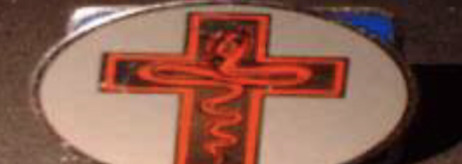
In Egyptian hieroglyphics the god Ptah (a god who represented Azazel) is always associated with an ‘x’ within a circle, also known as the quartered circle (for this reason an ox has become an esoteric symbol of Azazel (Oxford University derives its name from it). A male ox is called a bull, a common angel symbol (by extension, Azazel’s human wife may be symbolized as a cow. The Egyptian cow goddess represents Azazel’s human wife). Compare the ‘x’ within a circle symbol of Ptah to the Cross of Wodan, also a cross within a circle. The Germanic god Wodan is yet another god who represented the angel Azazel/Behemoth. The Celtic cross of the Druids also incorporates the ‘cross within a circle’ motif. In some circles the ‘cross within a circle’ motif is known as the Mark of Cain (this is due to the fact that in the Phoenician alphabet the letter ‘T’ is rendered as an ‘X’ and is pronounced ‘tau,’ meaning ‘mark’). Cain of course was the son of Azazel by Eve. The quartered circle was the badge (talisman/magic charm) of the Grand Master of the Knights Templars. No doubt it was worn in part to protect the user in battle as God was said in Genesis 4:15 to have placed such a “mark” upon Cain to keep him from being slain). The so-called Freemasonic Scottish Rite 18th Degree Rose Croix quartered circle (also a symbol of the Gnostics/Gnosticism) is a variant of the ‘cross within a circle’ motif. The NATO military alliance also employees a variant of the ‘quartered circle’ logo which is representive of the god of war Azazel. As we learn from the Wicca witch priestess Doreen Valiente in Witchcraft for Tomorrow pp.67-68, the cross within the circle motif, the sign of Azazel, was one of the designs of the ‘magic circles’ of the witches; the construction of such a ‘magic circle’ was standard practice when witch’s invoked their Horned God, who was Azazel! In fact, the device known as ‘the witches’ mark’ which was employed by the witches (often signed during witches’ initiation ceremonies) is “an X-shaped cross” (Ibid p.179), the sign of Azazel.
The red cross (in appearance a red X), was emblazoned upon Azazel’s cherub Behemoth: “Lamia is the ‘snake’ among the Ophidian; Lama is the hand: lamh, hand (for this reason a hand may also be used to represent Azazel; two examples are the god Sabazios, who represents Azazel, and whose symbol is a hand and also the witch’s Hand of Glory which likewise represented Azazel), is a divine name in the Scythian tongue. It also means the number 10, and the Roman numeral X, which is a cross...which, according to Eastern allegory, is placed...upon the Rebellious Spirits (read: a red X was emblazoned upon the cherub of the angels) in their ‘abyss’ or ‘prison’ (within the earth).” - The Rosicrucians: Their Rites and Mysteries by SRIA member Hargrave Jennings, 1870 A.D.. The SRIA is an English Rosicrucian Society. SRIA members, it must be remembered, gave birth to the Hermetic Order of the Golden Dawn, oweing its “mysteries” in part to this book by Jennings). The Knights Templar god Baphomet also represented Azazel. As we learn from The Rosicrucians: Their Rites and Mysteries (Hargrave Jennings) p.215, the Coptic root –met encountered in the word Bapho-met means “ten.” The Roman numeral signifying 10, rendered as an X, a cross variation, is the sign of Azazel (Ba [ab/father]-pho [oph/serpent] – met [X]). In her book Witchcraft for Tomorrow p.117 the Wicca witch- priestess Doreen Valiente reveals: “Ogham was a sacred Druid alphabet and would certainly have contained magic secrets...” I would say one of the biggest secrets it reveals is the mystery surrounding the identity of the mysterious Theosophical Society deva known as Master KH with whom many high-ranking members of this society claimed to be in contact. In the sacred Ogham alphabet of the magic practicing Druids, KH was rendered as an X. Master KH, which is the Druid way to say, Master X, was the Hidden Master Azazel himself! This is also the idea behind the word ‘Ur-Khaos,’ the god of the underworld: KH (X) + A (horned ox head sign of the horned god) + O (the disk, a cherub) + S (the serpent), the serpent horned god of the X-marked disk of the Chaldean city of Ur (Ur- Khaos was later translated as Orcus, the Gaelic Druidic god of the underworld/abyss). According to the Ritual Magic of the Golden Dawn (p.208, King 1987), the rising of Adonai, of Mithra the Lord of Wide Pastures was by the ancient mysteries symbolized under the form of a rose (also known as the ‘Rose of Dawn’). In a like way, the gods Adonai and Mithra represented Azazel/Behemoth (“Adonai has...come to mean, through the Rosicrucian tradition, the Holy Guardian Angel [with whom, it must be noted, magicians sought to communicate].” - Eight Lectures on Yoga by Aleister Crowley, 1939 A.D.). Azazel will in the future arise within his cherub being loosed from his earthly imprisonment. In respect to the angel Azazel, the rose cross also symbolizes the future rising of Azazel/Behemoth, Azazel being accepted as the coming Messiah. So the rose is also used as a symbol of Azazel. The red cross as a symbol of Azazel’s cherub Behemoth also hearkens back to the Egyptian mysteries of Osiris. The god Osiris represented Azazel’s cherub Behemoth, and by extension, Azazel. In the Egyptian Hymn to Osiris, the “disk” of Osiris (Osiris = Behemoth) is identified as the “rosetau,” the rose (red) cross (“Divine oblation to Osiris [Behemoth] Khent-Amenti, lord of Abydos...the disk...the rostau” - Hymn to Osiris). Cherubim are disk-shaped. It must also be noted the tau cross (rendered in Greek as a T) is the 19th letter of the Greek alphabet. Azazel’s prophesied release takes place on the 19th day of July 2016 A.D. In Freemasony, the symbol for Azazel, a tau cross, is represented by the T-square. The Rosicrucians, whose name means “rose cross” in German, names their secret organization after the rostau/disk/Osiris/Behemoth. The Germanic name Christian Rosenkreuz, which in English translates as ‘Christian Rose Cross,’ represents no other persona than the rebellious angel Azazel himself. The name is a play on words which may be interpreted as the christ of the red cross, representing Azazel, whose sign is the red cross, in reference to his future appearance as the false-christ/false prophet/messiah (See Revelations 16:13; according to the Rosicrucian Hargrave Jennings in The Rosicrucians: Their Rites and Mysteries, p.142, the color red is male and represents the Salvator, a Latin word meaning ‘Savior’). Theosophist Freethinker Ida C. Craddock provides another piece of our puzzle: “Why did these mystics call themselves Rosicrucian? Some writers have attempted to derive the name from two words meaning "dew" and "cross": but the usual interpretation is "followers of the Rosy Cross" (read: followers of Azazel) a cross with a rose (used analogously of Azazel) being used as the society's symbol.” - Heavenly Bridegrooms. (It must also be mentioned when one adds the disk (O) [Azazel’s cherub is disk-shaped], to the word Sirius, it becomes Osirius, and when one drops the ‘u’ it becomes Osiris. The heliacal rising of the star Sirius in 2016 A.D. takes place on the 19th day of July, the day Azazel in his disk-shaped red-cross emblazoned cherub is to emerge from his earthen imprisonment, claiming to be Christ. In this same way, the Babylonian god Ea, alternatively spelled Ia (another such god which represented Azazel/Behemoth), becomes the name of the Gnostic god Iao with the inclusion of the disk [O]). The words ‘Sirius’ and ‘Osiris’ are related to the Semetic word ‘Siru’: “Scholars ordinarily refer to the serpent god (who is Azazel) by the name Siru, being the Semitic word for serpent...” - p.120, Tammuz and Ishtar (S. Langdon, “Shillito Reader of Assyriology, Oxford,” 1914 A.D. It would also seem the name Isis is also derived from the word Osiris). As an additional added bonus note, in the ancient Babylonian system of Gematria, where letters are used to represent numbers, the number 10 is represented by the letters IA (which Roman numeral is represented by an X). ‘Ia’ of course is an alternative spelling of the name of the god ‘Ea.’ Compare the modern spelling of our number ‘ten’ to the name of the Egyptian sun disk ‘Aten’ (in Roman, A-X) (AX = IAO = OX). No doubt there exists a connection here. In the pictographic alphabet of the Egyptians, a horned ‘ox head’ (representative of the horned-god Azazel) was the equivalent of the Roman letter ‘A’ (and hence was also derived the anarchist symbol for Azazel, an A within a circle/disk [O]). All of these are designations for Azazel’s cherub Behemoth and by extension, Azazel. Additionally, Ax/Abrasax were synonymous terms: “You are Ax, you are Abrasax (Ab [father] + Ra [the disk] + S [the serpent] + A [horned oxhead/horned god] + X [ten] (A-ten)), the angel who sits upon the tree of Paradise...” (A-X is the Archaic Latin alphabetic version of the classical Greek Alpha-Omega, the title of the resurrected Christ (See Revelations 22:13). Both are the first and last letters of their respective alphabets. Perhaps it signifies a Creator/Destroyer, an angel and the cherub [the word ‘destroyer’ in The Bible is used synonymously with that of the word ‘cherub’] to which he was assigned). As such an ax is often used as a symbol for Abrasax/Azazel (compare ‘ax’ to the Greek word ‘aix’ which means ‘goat’ (note the addition of the phallic ‘pillar,’ I). The Hebrew word for a male goat is also used to denote a demon. The demons are the rebellious fallen angels. For this reason Satyrs/demons, representative of fallen angels, are symbolically represented as being goat-like in appearance, such as the god Pan, the king of satyrs, who represented Azazel). The letter ‘O’ was derived from the Semitic `Ayin (eye), and hence, the ‘eye (disk) of Horus,’ also known as Azazel’s cherub Behemoth. Constantine’s ‘IX monogram’ (also employed by the Merovingians) often encircled with the disk in its various forms is likewise esoterically connected with the false christ Azazel. Constantine never actually abandoned his pagan beliefs, he simply applied a Christian veneer. A phallis also is a symbol used to represent Azazel, often represented as an ‘I,’ it being representative of Osiris’ phallis which according to one version of the Osiris legend was the single dismembered member of Osiris’ dissected corpse retrieved by the goddess Isis. One may conclude this to be the origin of the artificial stone phalli and priapic statues employed in Egyptian magic rituals, it representing Osiris’ amputated phallis. I believe such priapic idols were actually used to perform hiero gamos magic rituals involving the ritual rending of a virgin’s hymen. The Hermetic Order of the Golden Dawn also esoterically derives its name from Azazel. Hermes was another Egyptian name for Azazel, he of a thousand names. The Golden Dawn is analogous of the solar disk, the sun, which like Azazel’s cherub Behemoth, is disk- shaped and rises at dawn, which is the expected time of Azazel’s future release (“the holy one (read: the angel Azazel in his cherub) appeared...;; as a golden dawn did he appear...” - Aleister Crowley’s LIBER ARCANORUM τών ATU τού TAHUTI QUAS VIDIT ASAR IN AMENNTI SUB FIGURÂ CCXXXI LIBER CARCERORUM τών QLIPHOTH CUM SUIS GENIIS. ADDUNTUR SIGILLA ET NOMINA EORUM) (in the Egyptian Book of the Dead Plate XXI B.D. Chap. XV it was said the Egyptian god Ra, who represented the angel Azazel, “risest at dawn” in allusion to the time of Azazel’s release). Israeli Regardie, a Rosicrucian who later joined the Stella Matutina, a successor organization of the Hermetic Order of the Golden Dawn (Regardie served as personal secretary to Aleister Crowley), writes in his book entitled The Golden Dawn: “‘The Rose- Cross’... is a glyph...of the higher Genius (read: angel) to whose knowledge and conversation the student is eternally aspiring” (in reference to Aleister Crowley’s “attainment of the Knowledge and Conversation of the Holy Guardian Angel”). The ‘Genius’ of which Regardie speaks with whom such individuals sought to converse is a so-called ‘guardian angel,’ the angel Azazel. His glyph/symbol is the rose cross/red cross. Indeed, Azazel is known as Sirius, the Hidden God of the Illuminati (the Illuminati/angels are also known as the ‘Grand Masters of the Templars’), so named as his return is associated with the Dog Star Sirius. This fact is important enough to repeat. Azazel is known as the “Hidden God Sirius”: “In his book ‘Magickal Revival’ Grant writes that Phoenix was (Aleister) Crowley’s most secret name. It represented the ancient Constellation in which Sothis (Seth) or Sirius was the highest star. He writes that Crowley associated the very heart of his teachings and ‘Magick’ with a certain star, namely the ‘Sun behind the Sun,’ the ‘Hidden God Sirius.’ The secret of the Illuminati, or the Enlightened Ones is the blazing star Sirius, Grant writes.” – The Sirius Mysteries (Notable quote: “To the Egyptians, the Sun behind the Sun was known as Osiris (a god who represents Behemoth/Azazel) and also as Amun-RA, the Hidden Sun.” - The Book of the Master by Marshall Adams. Indeed, the Egyptian Hymn to Osiris-Soka is a summons/call addressing the angel Azazel in greeting: “Hail, thou hidden God, Osiris (Behemoth/Azazel; Sirius is a cognate of Osiris) in the underworld!”) (The Great Hymn of Aten, Aten being representative of Azazel’s cherub Behemoth, is called therein the “hidden...god...in the underworld...”). Crowley was merely carrying on a long established magic tradition, most noteably of the magic practiced by high-degree Freemasons (often gleened from ongoing archaeological discoveries): “The Ancient Astronomers (astronomers were as a rule astrologers/sorcerers) saw all the great Symbols of Masonry in the Stars. Sirius glitters in our (Freemasonic) lodges as the Blazing Star (which is a symbol of Azazel. ‘Blazing’ is synonymous with ‘shining’**).” - Morals and Dogma of the Ancient and Accepted Rite of Scottish Freemasonry by Albert Pike. Indeed, as we learn from C. W. Leadbeater (a prominent member of the Theosophical Society) in Glimpses of Masonic History the Blazing Star Sirius (representative of Azazel), the so-called glyph of the higher genius with whom all practitioners of magic sought to contact, was symbolized by “the Rose which ever blossoms at the heart of the Cross,” the very symbol of the Rosicrucians themselves. Compare to the Dogon tribe in Africa which also portrays the helical rising of Sirius as a cross with a flower-like sun at its center. (The fallen angel Azazel is associated with the star Sirius. The Five- Pointed Star, the pentagram/pentagon, is the icon of Sirius, and as such, the icon of Azazel, as well as the esoteric importance of the five-pointed Blazing Star of the Masons. The symbol of the star Sirius as a symbol of Azazel hearkens back to Biblical days: “Yea, ye took up the tabernacle of Moloch [their King Azazel], and the star [called a Chiun] of your god Remphan [Azazel], figures which ye made to worship them: and I will carry you away beyond Babylon.” - Acts 7:43; and again: “But ye have borne the tabernacle of your Moloch [their King Azazel] and Chiun your images, the star of your god [Remphan/Azazel], which ye made to yourselves.” - Amos 5:26) (** “According to Sufi expert Idries Shah the “true rulers of the world are the ‘Enlightened Ones’” (Illuminati) [read: the fallen angels] and the Sufi have discovered their secret in the Quran in the following verse: “Allah [who is Azazel] is the Light of the Heavens and the Earth. His Light is resembled by a lamp within a niche. The lamp within a crystal, like a shining (blazing) star.” He claims the allusion to a ‘shining star’ is a reference to ‘Sirius’ (See The Sirius Mysteries). The angels are known as the Shining Ones and a star is often used as the symbol for an angel, hence Shining Star/Blazing Star) (A Not- so-notable Quote: “Such surely is the destiny that awaits our beloved Order in the future;; such the splendour that will transfigure the Craft [Freemasonry] in the years that are to come, until within its temple walls once more is raised - not only in symbol but in actual fact (upon Azazel’s release from his earthen imprisonment) - the ladder which stretches between earth and heaven, between men and the Grand Lodge above, to lead them from the darkness of the world to the fullness of light in God (he speaks not, to be sure, of the God of Christians and Jews, but of the god of the Craft, who is Azazel), to the Rose which ever blossoms at the heart of the Cross, to the Blazing Star whose shining brings peace and strength and blessing to all the worlds.” - Glimpses of Masonic History by C. W. Leadbeater) According to a footnote to The Dionysian Artificers: “Thamuz (a variant spelling of Tammuz) signifies the name of a month, and likewise the name of an idol or divinity, which even in the opinion of St. Jerome is the same as (the god) Adonis (both are gods who represent the angel Azazel). Plutarch says that the Egyptians called Osiris Ammuz, and from thence was corruptly derived the name of Jupiter Ammon (‘Ammon,’ a varient spelling of ‘Ammoum,’ means ‘the Hidden One.’ See p.29 Witchcraft for Tomorrow by Doreen Valiente, 1978 A.D.). Robertson (Thesaurus Linguae Sanctae) says that the word Ammuz (read Ammoum) used by Herodotus and תםוז Plutarch, were corruptions from the Hebrew Thamuz (Hebrew {Hebrew TMWZ}). I would rather say that the word was originally ת Egyptian, and made Hebrew by the addition of the formative {Hebrew T})...” And so was an Egyptian name for Azazel, namely Ammuz, transformed into Tammuz by the addition of the symbol for Azazel, namely, the tau cross (rendered in Greek as a T; in the Phoenician alphabet, the Greek ‘T’ takes the form of another enigmatic symbol of Azazel’s cherub Behemoth, the quartered circle/‘x’ within a circle, pronounced ‘tet’ and meaning ‘wheel,’ a Biblical name for a cherub). It must be noted The Dionysian Articifers (circa. 1820 A.D.) is an essay written by an eminent Brazilian Freemason. The Greek Dionysiacs as they were also called was an association of architects and engineers, followers of the god Dionysius (also known as Bacchus) and builders of temples, theatres and stadia, an early society of Freemasons. As earlier noted, in Freemasonry the tau cross, the symbol of Azazel, is represented by the T-square. (Notable quote: “The TAU [the sign of Azazel] is the central figure of the Theosophical Seal [employed by the Theosophical Society] and the heart of its message.” - The Theosophical Seal by Arthur M. Coon, 1958 A.D.) (The Thames River in England is named after Thamuz/Azazel: “The Thames through Oxford is often given the name the River Isis, although historically, and especially in Victorian times, gazetteers and cartographers insisted that the entire river was correctly named the River Isis from its source until Dorchester-on-Thames. Only at this point, where the river meets the River Thame and becomes the “Thame-isis” (subsequently abbreviated to Thames) should it be so-called; Ordnance Survey maps still label the Thames as “River Thames or Isis” until Dorchester.” – Wikipedia: River Thames. Isis, it must be remembered, is an Egyptian name for Azazel’s human wife) (The Hammer of the god Thor, who represented Azazel, in form resembles and represents a tau cross (T), the sign of Azazel) The Rose Window (the rosette window) on the façade of the Rosslyn Chapel (aka the Collegiate Chapel of St Matthew) located at the village of Roslin, Midlothian, Scotland, employs such rose cross symbolism in its architechural design. This is a symbol of the future release of the angel Azazel. Other architectural features of Rosslyn Chapel include over 110 ‘Green Man’ carvings. The Green Man represents the angel Azazel (the Egyptian god Osiris, a god who represented Azazel/Behemoth, was depicted with green skin). Ancient Sumerian depictions of Azazel show him wearing rosette bracelets (which would account for the rose being used as a symbol of Azazel). It must be noted the Rosslyn Chapel was erected by 15th Century Masons acting under the auspices of the Roman Catholic Church. Ceremonial magician A.E. Waite and one-time Chief of the Druid Order in England Godfrey Higgins believed that the secret to forming the Philosopher’s Stone with the aid of dew was the secret concealed in the Rosicrucian name. One interpretation of the Rose Cross is that the rose represents the dew in an alchemical process, as Rosi Crucis translates as ‘dew cup.’ The following scripture esoterically refer to regeneration as it refers to the Resurrection. Note the use of the rose motif to symbolize regeneration (Franz Hartmann has stated “the greatest of all magical feats” is “the spiritual regeneration of man.” See the Preface to Third Edition of Magic, White and Black). Flowers are often used as symbols to represent the human body: “...your body is the garden of flowers.” - The Songs of Kabir “Listen to me, you holy sons, and bud like a rose which grows by a watercourse; exhale fragrance like a frankincense tree, and blossom like a lily. Give forth an odor and sing a song, bless the Lord (God) for all His works.” - The Wisdom of Sirach 39:13-14 “How glorious he was...Like roses in the days of first fruits, like lilies by a spring of water, like a sprig of frankincense, on summer days, like fire and incense in the censer...” - The Wisdom of Sirach 50:8,9 “I am the rose of Sharon, and the lily of the valleys.” - Song of Songs 2:1 (KJV) (Lilys of the valley are hexagonal in shape) The rose and the cross of the Rosicrucians also symbolize regeneration. To Rosicrucians, the rosy cross can represent the formula for the Universal Medicine, the panacea for all forms of disease. In addition to the Rosicrucians, the Rose/Cross motif is shared by the Masons (as evidenced by The Scottish Rite ‘18th degree Knight of the Rose Cross’). To the Masons the rose/cross was in one respect the symbol of regeneration: “The rose is the ancient emblem of spring. Upon the cross it signifies...man regenerated” (Ancient Masonry C.C. Zain 1994 p. 249). It must be noted a five-petaled rose is used to represent a pentagram, while a six-petaled rose represented a hexagram. The cross is an esoteric symbol for a transverse electromagnetic wave; a hexagram represents a standing wave (See The Knowledge of Wisdom by John of the Gentiles). The Rose/Cross motif is also a symbol of (as evidenced by the Rosy Cross lamen of) the magic group known as the Hermetic Order of the Golden Dawn. These organizations are all associated and the use of shared motifs, vis a vis, evidence these organization’s shared beliefs, as well as their shared associations. Members of one such order are often members of similar orders. These organizations are cell-like and dynamic, and like the hydra of old, they have many heads working towards the same final goal, so the loss of one does not result in the destruction of all, while others will spring up in its stead. The beast lives on to fight another day. The ancient Roman practice of adorning with roses the door of a room in which confidential matters were discussed gave birth to the phrase “sub rosa,” which translates as “under the rose,” meaning, “to keep a secret” (Notable quote: “...brought from ancient Egypt, is the Cross upon the Rose — Cross, symbol of life, Rose, symbol of matter and symbol of secrecy as well.” – The Brotherhood of Religions by Annie Besant Adyar Pamphlets No.24). These were secret meetings of secret societies discussing secret matters. The Romans called the rose the ‘Flower of Venus.’ The goddess Venus represented the angel Azazel’s human wife. King Arthur and his Round Table used Rosicrucian motifs, or, rather, vice versa. The rose/cross symbol was said to be drawn upon the Round Table used by Arthur and his Knights (the Tree of Life is also a common symbol amongst Medieval knightly themes). Arthur’s/Azazel’s Round Table represented Azazel’s cherub Behemoth. The red cross was also associated with the Holy Grail which in the Arthurian legends was the Christianized symbolic version of the long sought after cherub of Azazel (Behemoth). A rose is also the central motif for the links of the chain upon which the “Great George” is suspended amongst the jewels of the Order of the Garter. The symbol of the Knights of the Garter is a red cross on a white shield. Both were/are Masonic organizations. One symbol of the Knights Templar was the red cross on a white background, also by design symbolic of Azazel’s cherub (the rose/cross combination was also the badge [talisman/magic charm] of the Knights Templar group). The tradition continues today with the Red Cross organization. It must be mentioned many of the gods which represented Azazel were gods associated with healing. The Sumerians worshipped Azazel as Ninazu (nin means ‘lord’), the god of healing and of the underworld. The Romans knew him as Aesculapius, the god of medicine, and he was known to be as well the Greek and Phoenician god of healing. The red cross which represents the god-angel of healing Azazel is for this reason used as a symbol of the medical organization known as the International Federation of the Red Cross, most commonly known as the Red Cross. (Notable quote: “Many of the magical charms and spells were for the healing of the sick or for the prevention of disease...Many charms and spells surviving to the present day contain the names of pre-Christian gods (all representing the angel Azazel). These spells are usually connected with cures for diseases in human beings and animals” - p.75 The God of the Witches by Margaret Alice Murray, D.Lit., “Fellow of University College, London,” 1933 A.D.) Aesculapius (Azazel) was the Roman god of medicine as well as the Greek and Phoenician god of healing. He was often depicted wielding what is known as the Staff of Aesculapius. Various medical organizations adopted the Staff of Aesculapius as its medical insignia, the staff itself consisting of an axial rod with a single winged serpent entwined about it. The U.S. Army Medical Corp has the Staff of Aesculapius as its insignia. The winged staff/serpent symbolism was also employed in the symbol of the Caduceus of Hermes. Enki’s emblem (Enki who also represented Azazel) was two entwined serpents and was the symbol of his ‘cult center’ at Eridu, same as that of the medical profession. This symbolism is also reminiscent of the Sumerian underworld god of healing, Ningishzida (Nin- means ‘divinity’/lord), whose symbol was two snakes entwined around a central axial rod (the Rod of Ningishzida is the symbol of the great guild of physicians in England) (It must be noted one of the many Egyptian titles for Azazel was “the two-headed serpent” (See the Egyptian Book of the Dead Plate XXXI)). The satyrs themselves carried a similar instrument known as a thyrsus, also known as the rod of Dionysus, a stick wound round with ivy and tipped with a pine (@ p.470 on scribd lol)
2 notes
·
View notes
Text
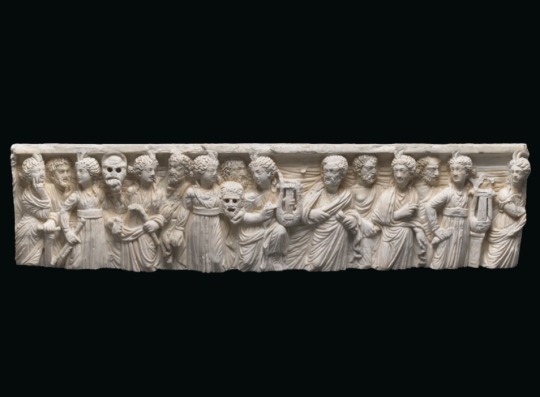

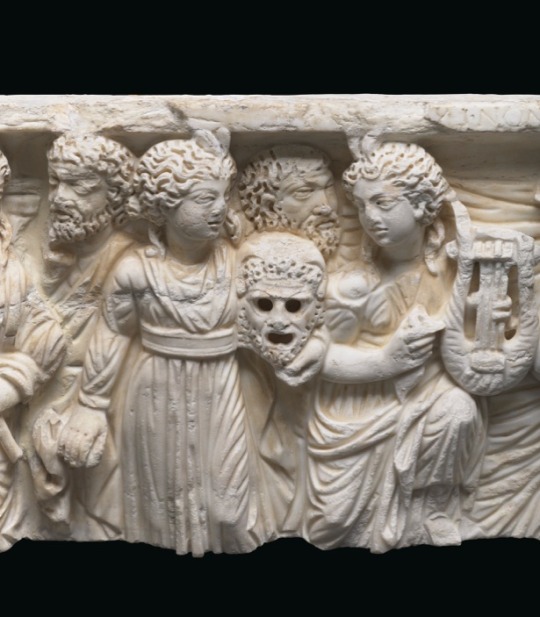
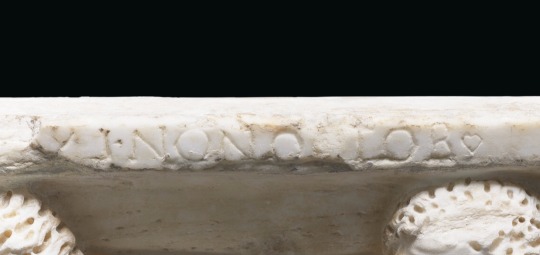

A ROMAN MARBLE SARCOPHAGUS PANEL CIRCA 3RD CENTURY A.D.
The panel is inscribed in Latin over the top border with 'DEFV[NCT(VS)] VI NON(AS) OCTOB(RES)♡' which reads 'died the sixth day before the Nones of October', which corresponds to the 2nd October. It is very unusual for the date of death to be recorded without any further details of the deceased in a Roman epitaph of this date, as this becomes customary only from the 4th Century onwards, particularly on Early Christian sarcophagi. The quality of the lettering appears to be of lesser quality if compared to the workmanship of the carving and might possibly indicate a later re-use of the sarcophagus.
#A ROMAN MARBLE SARCOPHAGUS PANEL#CIRCA 3RD CENTURY A.D.#marble#marble statue#marble sculpture#ancient artifacts#archeology#archeolgst#history#history news#ancient history#ancient culture#ancient civilizations#ancient rome#roman history#roman empire#roman art#ancient art
23 notes
·
View notes
Photo

A Roman marble architectural column in the form of a date palm Circa 1st-3rd Century A.D.
Bonhams, London
14 notes
·
View notes
Photo
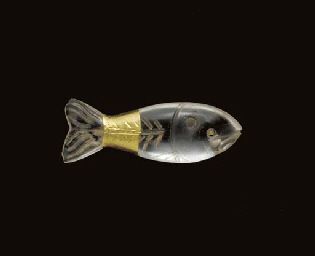
A Roman Rock Crystal and Gold Fish Pendant Circa 1st-3rd Century A.D.
26 notes
·
View notes
Text
MARCH: THE GOOD, THE BAD, THE WEIRD AND THE WONDERFUL.
Well, folks we passed level 3 of Jumanji, with just...
March
1st Mar: Former French president Nicolas Sarkozy sentenced to prison for corruption.
1st Mar: Arrests at Camp Nou for financial crimes
1st Mar: Meteor seen over UK
1st Mar: Japan asks China to stop conducting rectal covid tests on Japanese citizens
1st Mar: Perseverance Rover being controlled from flat above hairdressers in London, because Covid forced him to work from home
1st Mar: Zimbabwe Vice President resigns over voice cloning sex scandal
2nd Mar: Former Liverpool player Ian St John passes away aged 82
2nd Mar: Hundreds of kidnapped Nigerian girls released
3rd Mar: 6.2 magnitude Earthquake in Greece
3rd Mar: Thai Navy rescue four cats from burning ship
3rd Mar: Cat rescued from train roof
4th Mar: ICC opens war crimes investigation in Gaza and The West Bank
5th Mar: Illusion of ship floating in mid air photographed of Cornish Coast
5th Mar: Nun stands up against Myanmar military
6th Mar: Pope Francis meets Iraq's top Shia Cleric, in a private meeting in his home - the first between senior Christian and Muslim leaders
7th Mar: Bata, Equatorial Guinea explosions
7th Mar: Yemen migrant detention Centre fire
7th Mar: Myanmar political official dies in custody
7th Mar: Prince Harry and Meghan Markle, Oprah interview
8th Mar: German MP resigns over face mask sale, firm earned €250,000 euros from sales
8th Mar: Switzerland votes to ban religious face coverings in public
8th Mar: Syrian President and wife test positive for covid
8th March: South Africa student protests
9th Mar: Piers Morgan quits Good Morning Britain
9th Mar: UK to return £4.2 million stolen loot to Nigeria
9th Mar: Bangladesh's first transgender news reader makes debut
9th Mar: Trevor Peacock, Vicar of Dibley passes away
9th Mar: Met Police Officer arrested on suspicion of kidnap and murder of Sarah Everard
10th Mar: Tanzanian President in Kenyan hospital with Covid - asking for prayers and herbal infused steam therapy
10th Mar: Myanmar police defecting to India after orders from military to shoot protesters
10th Mar: Second ship floating in mid air illusion photographed off British coast
10th Mar: Police, Crime, Sentencing and Courts Bill 2021 - protest powers outlined
11th Mar: 13 killed in Nigerian school attack
11th Mar: Egyptian clothing factory fire
11th Mar: Ivorian Coast PM dies in German hospital
11th Mar: China approves plans to control Hong Kong elections
11th Mar: Lou Ottens, inventor of the cassette tape dies aged 94
11th Mar: EU declared LGBT Freedom Zone
12th Mar: George Floyd family given $27 million settlement prior to murder trial
13th Mar: Met Police officer charged with kidnap and murder of Sarah Everard
13th Mar: Spanish police seize home made submarine in drugs raid
13th Mar: Amazon announces refusal to sell books that frame sexual identity as mental illness
14th Mar: Spanish police arrest biggest cocaine gang in Madrid
14th Mar: Minibus carrying Argentine President attacked by anti open pit mining protests
14th Mar: Women detained at vigil for Sarah Everard
15th Mar: Australian sexual assault protests
15th Mar: Beijing sandstorm
15th Mar: Niger-Mali border attacks
16th Mar: Dinamo Zagreb manager given five year jail sentence for fraud
16th Mar: Bulgarian Police seize millions in counterfeit during operation with US
16th Mar: Rare ancient scroll, circa 2nd century a.d. found in Isreal Cave of Horror
16th Mar: Atalanta massage parlour shootings
17th Mar: Japan finds same sex marriage ban unconstitutional
17th Mar: Sabine Schmidtz passes away aged 51
17th Mar: Iceland records fifty thousand earthquakes in three weeks
17th Mar: Reddit investors adopt 3,500 gorillas in six days
17th Mar: First Sound recording of a Mars rover driving released by Nasa
18th Mar: Man arrested outside Kamala Harris' residence with rifle and ammunition
19th Mar: Salia Suluhu Hassan becomes first female Tanzanian President
19th Mar: 2,500 year old bull figurine found at ancient site of Olympia
19th Mar: Drugs worth over a million euros seized by French police turned out to be ground up strawberry haribo
20th Mar: Turkey withdraws from Istanbul convention to combat violence against women
21st Mar: Australia sees worst flooding in sixty years
21st Mar: 'Kill the Bill' protests turn violent in Bristol
22nd Mar: BBC and Sky announce deal to broadcast live women's football
22nd Mar: Boulder, Colarado ten killed in mass shooting, seventh in seven days in US
22nd Mar: Canada, EU, UK, and US impose sanctions against Chinese officials over Uighur detention camps and human rights abuses
23rd Mar: Container ship runs aground in Suez Canal
24th Mar: Virginia becomes first Southern state to abolish death penalty
24th Mar: Norwegian football team wears human rights t-shirts in protests over Qatar World Cup human rights abuses of migrant workers
25th Mar: Protests outside West Midlands school over Prophet Mohammed cartoon
25th Mar: German team follow Norwegian team in wearing t-shirts to support migrant workers in Qatar
25th Mar: North Korea tests ballistic missiles
25th Mar: Japan begins Olympic torch relay
26th Mar: Egyptian train crash
26th Mar: Dominion voting sues Fox News for $1.6 billion over election fraud claims
26th Mar: Western brands boycott cotton produced in China's Xinziang provence
27th Mar: Walrus spotted in Tenby
27th Mar: World Anti-Doping Agency launches investigation over British cycling allegations
27th Mar: 114 killed by security forces in Myanmar
28th Mar: 6 year old boy finds 488 million year old fossil in garden
28th Mar: Militant attack in Palma, Mozambique
29th Mar: Stern of grounded ship in Suez Canal freed, and position corrected by 80%
29th Mar: Derek Chauvin trial begins for the death of George Floyd
29th Mar: Ever Given freed from Suez Canal and on the move, after six days
29th Mar: Indonesian oil refinery fire
29th Mar: Mafia fugitive captured after posting cooking video to you tube
30th Mar: Rebecca Welch becomes first female ref appointed to English Football League game
30th Mar: Teen who called himself 'Hitler' jailed for terror offences
30th Mar: Japan's cherry blossom earliest peak since 812 ad.
30th Mar: Child tweets gibberish from US nuclear agency account
30th Mar: Police bust World's biggest video game cheat operation, with a revenue of £55 million
31st Mar: Attempted coup foiled in Niger before inauguration
31st Mar: Italian Naval Officer caught selling secrets to Russia
31st Mar: North Macedonia beat Germany in 2022 World Cup qualifier
2 notes
·
View notes
Text
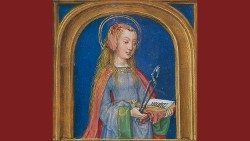
SAINTS FOR FEBRUARY 09
ST. APOLLONIA, VIRGIN AND MARTYR OF ALEXANDRIA, EGYPT-Highly regarded for her courage and integrity, she was captured in 249, when she was already an elderly woman, during the fierce persecutions of the 3rd century in Egypt. Refusing to deny the faith, she was tortured by having her teeth torn out, and was finally burnt alive.
St. Eingan, 6th century. Welsh prince and hermit, also called Anianus, Einon, and Eneon. He came from Cumberland, in Wales, the son of a chieftain. Eingan had a hermitage built at Llanengan, near Bangor.
St. Teilo, 6th century. Welsh bishop, also called Eliud, Issell, Teillo, Teilou, Dub, and Theliau. A native of Penally, Pembrokshire, Wales, he studied under Sts. Dyfrig and Dubricius. He accompanied the famed St. David of Wales to Jerusalem and was a friend and assistant to St. Samson in Brittany, France, for seven years. Returning to Wales in 554, he was quite successful as a preacher and founded and served as abbot-bishop of Llandaff monastery in Dyfed, Wales. He was buried in Llandaff Cathedral.
St. Alto, 760 A.D. Hermit and missionary, recorded as an Irishmen or possibly an Anglo-Saxon. He lived near Augsburg, Germany, arriving in the region circa 743. Living in a simple hut in wild lands, Alto soon achieved a reputation for holiness and austerity. Word of his good works reached King Pepin, who gave him a parcel of land near Altmunster, in modern Friesling Diocese in Bavaria. Alto Alto soon achieved a reputation for holiness and austerity. Word of his good works reached King Pepin, who gave him a parcel of land near Altmunster, in modern Friesling Diocese in Bavaria. Alto cleared the land and founded an abbey. St. Boniface came in 750 to dedicate the abbey church. The monastery was ravaged by the Huns but was restored in 1000 and made a Benedictine house. The Brigittines took it over in the fifteenth century.
St. Cronan the Wise, 8th century. A bishop of Ireland, possibly identified with St. Roman He systematized canon law in Ireland.
St. Cuaran, 700 A.D. An Irish bishop also called Curvinus or Cronan. He became a hermit on Iona, Scotland, after retiring as bishop, hoping to conceal his identity. St. Columba, however, recognized Cuaran.
0 notes